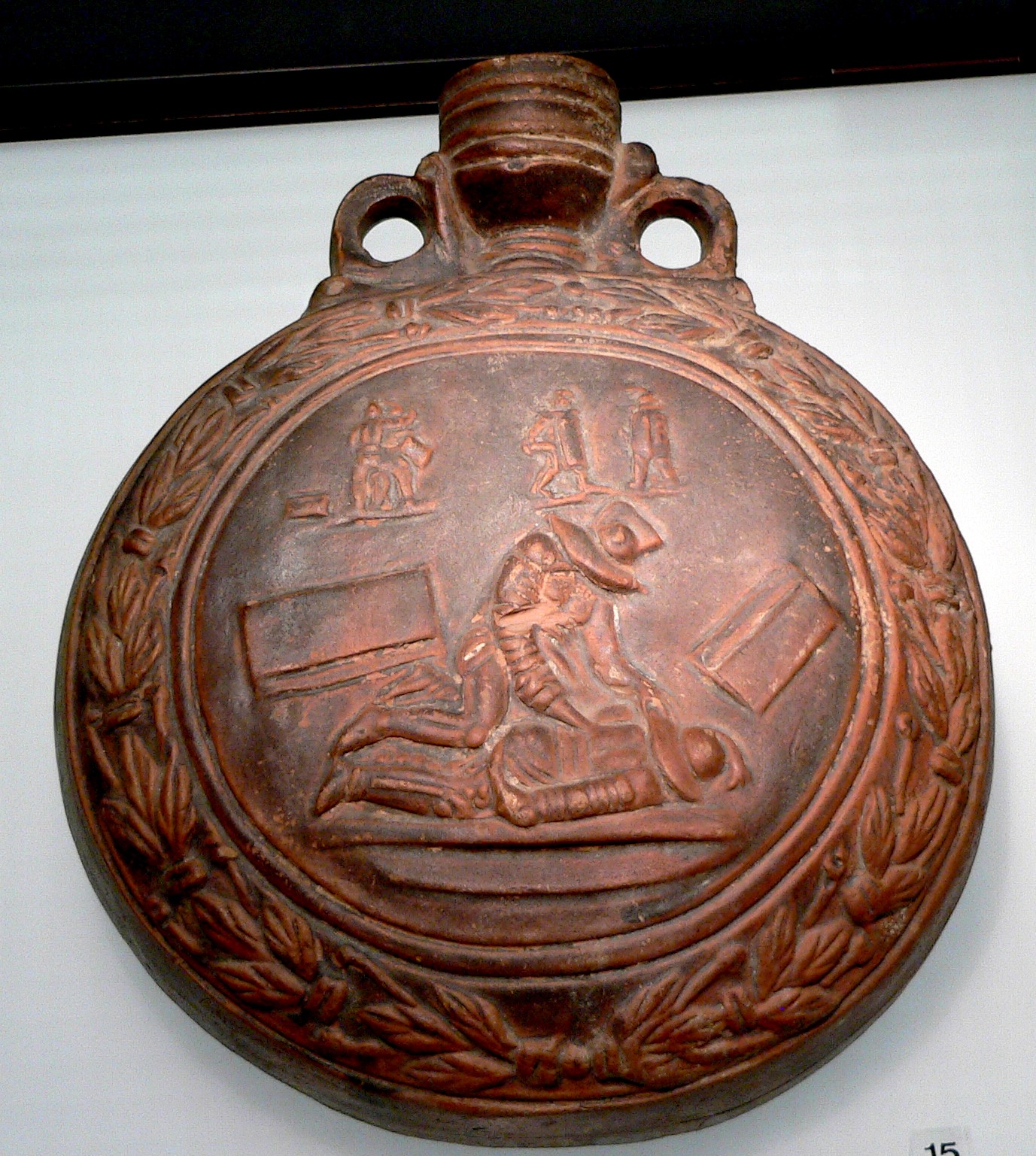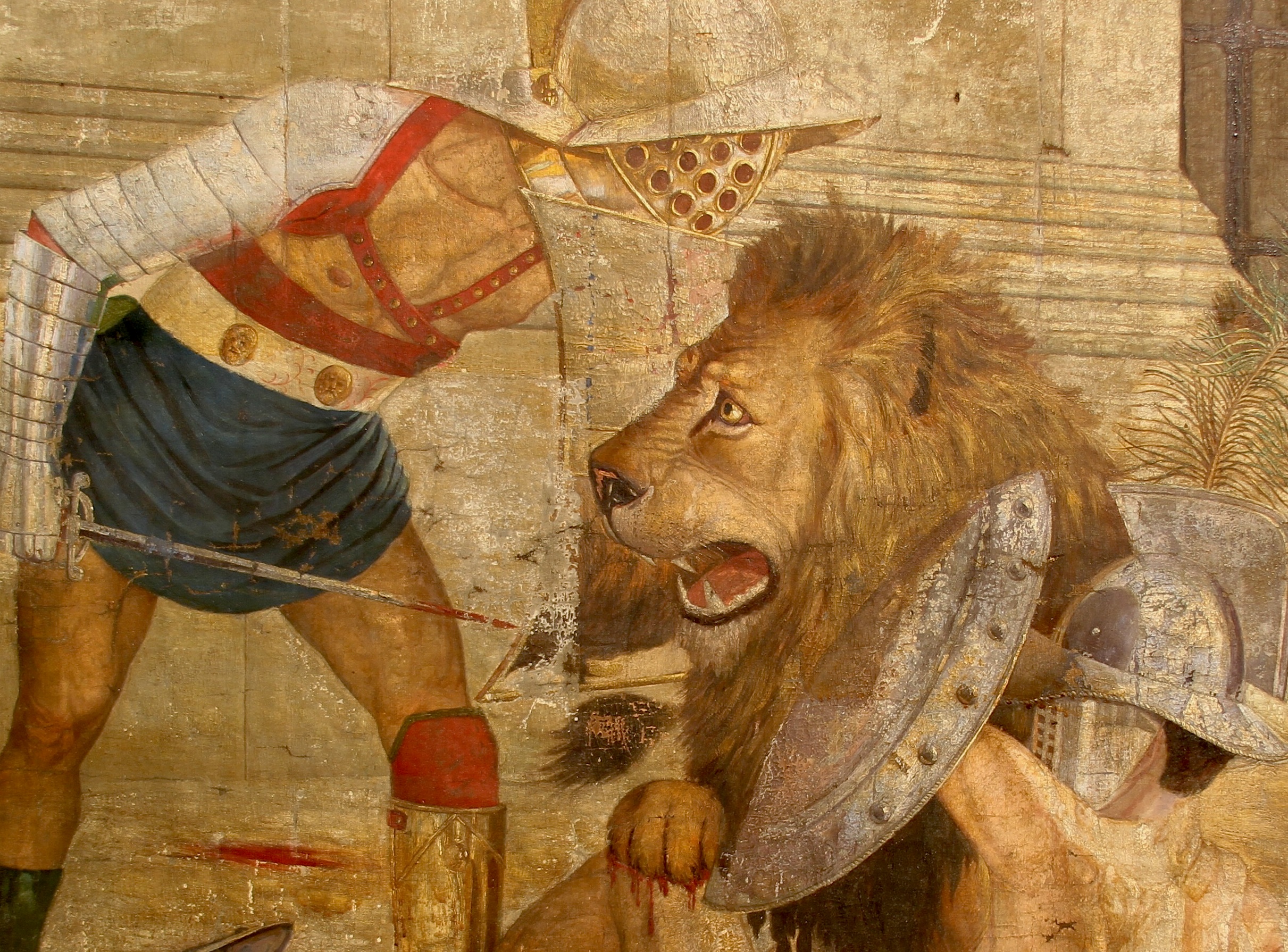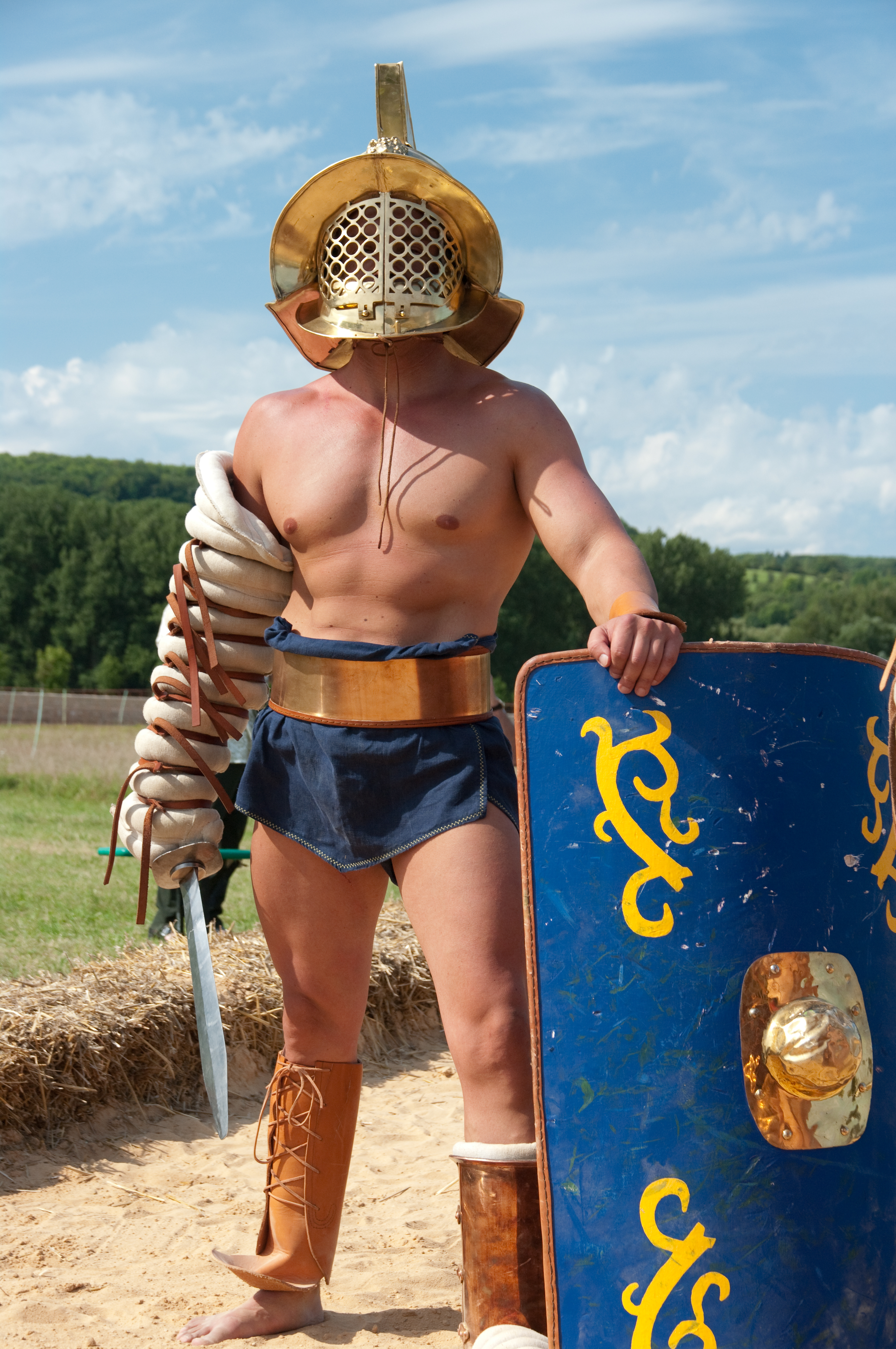Myrmillo on:
[Wikipedia]
[Google]
[Amazon]
 The murmillo (also sometimes spelled "mirmillo", "myrmillo", or "mirmillones" pl. murmillones) was a type of
The murmillo (also sometimes spelled "mirmillo", "myrmillo", or "mirmillones" pl. murmillones) was a type of 
 The murmillo was armed with:
*
The murmillo was armed with:
*
''Murmillo'', part of the Encyclopædia Romana
Fresco of a murmillo and Thracian fighting
found in
 The murmillo (also sometimes spelled "mirmillo", "myrmillo", or "mirmillones" pl. murmillones) was a type of
The murmillo (also sometimes spelled "mirmillo", "myrmillo", or "mirmillones" pl. murmillones) was a type of gladiator
A gladiator ( , ) was an armed combatant who entertained audiences in the Roman Republic and Roman Empire in violent confrontations with other gladiators, wild animals, and condemned criminals. Some gladiators were volunteers who risked their ...
during the Roman Imperial age. The murmillo-class gladiator developed in the early Imperial period to replace the earlier Gallus-type gladiator, named after the warriors of Gaul
Gaul () was a region of Western Europe first clearly described by the Roman people, Romans, encompassing present-day France, Belgium, Luxembourg, and parts of Switzerland, the Netherlands, Germany, and Northern Italy. It covered an area of . Ac ...
(). As the Gauls inhabiting Italy had become well integrated with the Romans by the time of the reign (27 BCE to 14 CE) of Augustus
Gaius Julius Caesar Augustus (born Gaius Octavius; 23 September 63 BC – 19 August AD 14), also known as Octavian (), was the founder of the Roman Empire, who reigned as the first Roman emperor from 27 BC until his death in A ...
, it became undesirable to portray them as enemy outsiders; the Gallus-class gladiator thus fell out of use.
The designation originated with the Greek word μορμύρος () for a type of fish -
murmillo gladiators could wear a Gallic-model helmet incorporating fish-imagery.

Equipment and armaments
 The murmillo was armed with:
*
The murmillo was armed with:
*Gladius
''Gladius'' () is a Latin word properly referring to the type of sword that was used by Ancient Rome, ancient Roman foot soldiers starting from the 3rd century BC and until the 3rd century AD. Linguistically, within Latin, the word also came t ...
: Roman sword with a length of 64–81 cm and weight of 1.2-1.6 kg with a handle made of bone.
*Scutum
The ''scutum'' (; :''scuta'') was a type of shield used among Italic peoples in antiquity, most notably by the army of ancient Rome starting about the fourth century BC.
The Romans adopted it when they switched from the military formation of ...
: Rectangular shield made of vertically connected wooden boards with a small bronze boss which protects the shield's handle.
* Balteus: Leather belt with metal decorations and supplements, similar to current boxing title belt
* Manica: Segmented or scaled arm guard made of leather or some metal alloys. Manicae can also be mailed.
*''Cassis Crista'': A large helmet with plume crest or horsehair, usually made of bronze, with an ornate 'grill' face visor. Usually based on the broad-rimmed Greek Boeotian helmet.
*''Ocrea'': Shin guard/protector made of bronze, iron or other metals.
*''Fasciae'': Thick soft padding on legs which are used to wear ocreas in order to prevent calluses and blisters.
Style
The murmillo usually fought thethraex
The Thraex (: Thraeces), or Thracian, was a type of Roman gladiator
A gladiator ( , ) was an armed combatant who entertained audiences in the Roman Republic and Roman Empire in violent confrontations with other gladiators, wild animals, and ...
(Thracian) or hoplomachus
A hoplomachus (pl. hoplomachi) (hoplon meaning "equipment" in Greek) was a type of gladiator in ancient Rome, armed to resemble a Greek hoplite (soldier with heavy armor and helmet, a small, round, concave shield, a spear and a sword). The hopl ...
, with whom he shared some of the equipment (notably arm guards and all-enclosing helmet, and the dangerous short sword). A number of ancient authors, including Valerius Maximus
Valerius Maximus () was a 1st-century Latin writer and author of a collection of historical anecdotes: ' ("Nine books of memorable deeds and sayings", also known as ''De factis dictisque memorabilibus'' or ''Facta et dicta memorabilia''). He worke ...
and Quintillian
Marcus Fabius Quintilianus (; 35 – 100 AD) was a Roman educator and rhetorician born in Hispania, widely referred to in medieval schools of rhetoric and in Renaissance writing. In English translation, he is usually referred to as Quinti ...
, assert that he also regularly fought the retiarius
A ''retiarius'' (plural ''retiarii''; literally, "net-man" in Latin) was a Roman gladiator who fought with equipment styled on that of a fisherman: a net casting, weighted net (''rete'' (3rd decl.), hence the name), a three-pointed trident (''f ...
. It would certainly have been an unusual pairing, contrasting a heavily protected gladiator with a fast but lightly equipped one. It would have been rather appropriate however, to have the retiarius, depicting a fisherman, fighting a Murmillo depicting a fish or sea monster. This pairing is disputed; visual depictions of murmillones usually show them fighting the thraex or hoplomachus rather than the retiarius. However, Channel 4
Channel 4 is a British free-to-air public broadcast television channel owned and operated by Channel Four Television Corporation. It is state-owned enterprise, publicly owned but, unlike the BBC, it receives no public funding and is funded en ...
's ''Time Team
''Time Team'' is a British television programme that originally aired on Channel 4, Channel 4 from 16 January 1994 to 7 September 2014. It returned in 2022 on online platforms YouTube and Patreon. Created by television produce ...
'' discovered in Wales a carved penknife handle depicting a retiarius and a murmillo fighting.
The murmillo's fighting style was suited for men with strong arms and shoulders due to carrying the weight of the shield, sword and heavy helmet. As a result, murmillones were usually tall and always very muscular. The murmillo depended on his strength and endurance to survive the battle against foes who were more suited to attacking. The tower shield gave him an edge in defence and the gladius enabled him to thrust and swing at his enemies when in close range. The murmillones were also trained to kick their enemies with the thick padding worn around their legs.
Examples of pairing murmillones with other gladiator types can be seen in frescoes and graffiti in Pompeii
Pompeii ( ; ) was a city in what is now the municipality of Pompei, near Naples, in the Campania region of Italy. Along with Herculaneum, Stabiae, and Villa Boscoreale, many surrounding villas, the city was buried under of volcanic ash and p ...
. In one well-preserved example, a murmillo named Marcus Atillus, who is credited with one match and one victory, is depicted standing over the defeated figure of Lucius Raecius Felix, a gladiator who is credited with 12 matches and 12 victories. His opponent is shown kneeling, disarmed and unhelmeted. The graffiti records that Felix survived the fight and was granted his freedom (''manumission
Manumission, or enfranchisement, is the act of freeing slaves by their owners. Different approaches to manumission were developed, each specific to the time and place of a particular society. Historian Verene Shepherd states that the most wi ...
'').
See also
*List of Roman gladiator types
There were many different types of gladiators in ancient Rome. Some of the first gladiators had been prisoner of war, prisoners-of-war, and so some of the earliest types of gladiators were experienced fighters; Gauls, Samnites, and ''Thraeces'' ( ...
References
{{reflistExternal links
*James Grout''Murmillo'', part of the Encyclopædia Romana
Fresco of a murmillo and Thracian fighting
found in
Pompei
Pompei (; ), also known in English as Pompeii ( ) after the name of the ancient city, is a city and in the Metropolitan City of Naples, Italy. It contains the ancient Roman ruins of Pompeii, a UNESCO World Heritage Site.
History
Modern Po ...
in 2019
Gladiator types